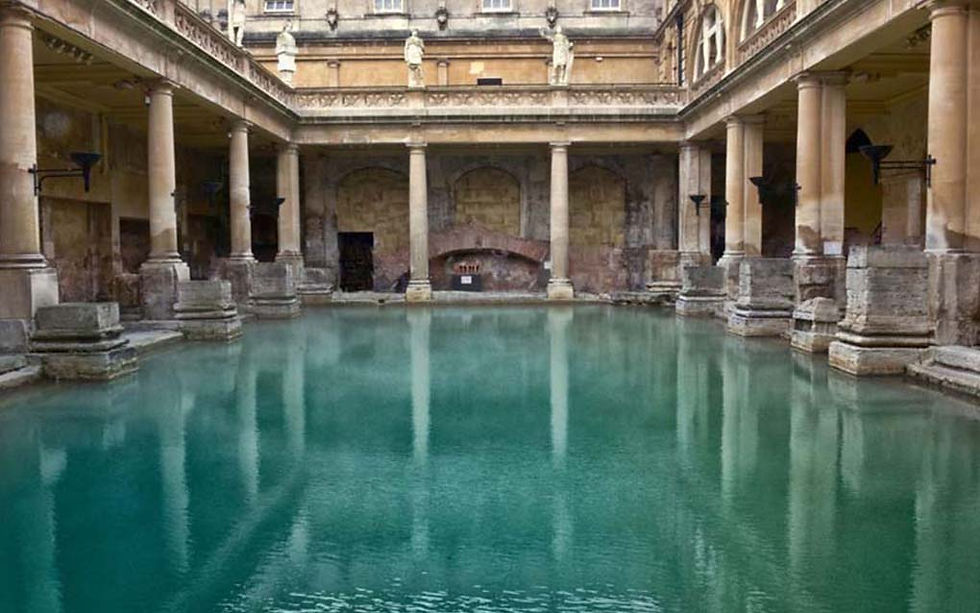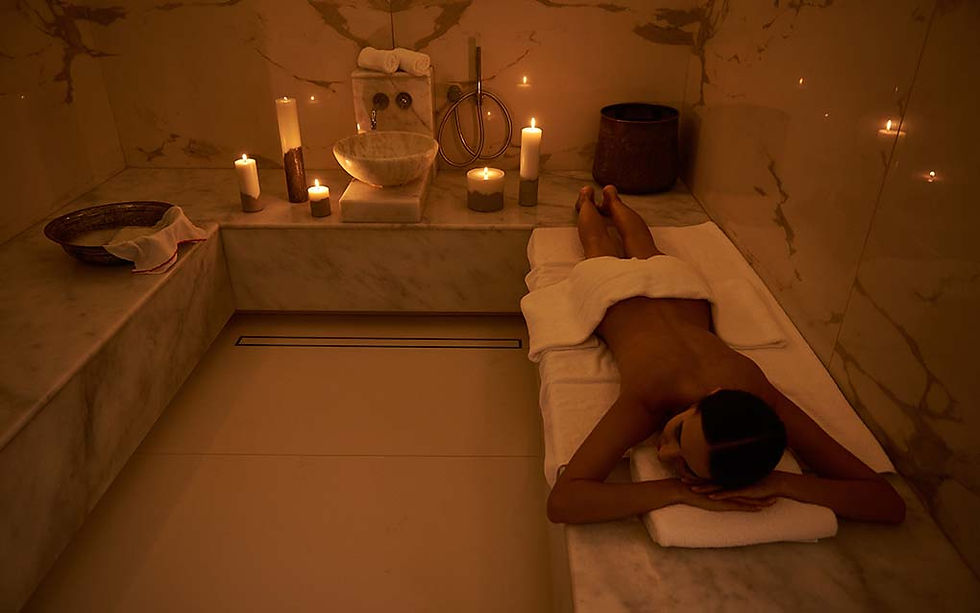How Ancient Wellness Rituals Shaped the Art of Relaxation
- Zen Virtuoso
- Sep 16
- 4 min read
When you think about self-care, images of spas, yoga mats, or essential oils might come to mind. But the truth is, people have been finding creative ways to relax for thousands of years — and many of those rituals still echo through our modern wellness practices. From Roman bathhouses to Japanese tea ceremonies to Turkish hammams, ancient civilizations treated rest and ritual not as luxuries, but as necessities.
Let’s take a trip back in time and see how these traditions shaped the way we unwind today.
Roman Bathhouses: The Original Wellness Centers

The Great Bath at the Roman Baths in Bath, England — a stunning example of how ancient Rome turned relaxation into ritual.
In ancient Rome, bathing was an event. Public bathhouses, or thermae, weren’t just about getting clean; they were about connection, restoration, and indulgence.
The Ritual: Romans cycled through a series of rooms — warm (tepidarium), hot (caldarium), and cold (frigidarium) — designed to open pores, relax muscles, and refresh the body.
The Community: Bathhouses doubled as social hubs, complete with gyms, gardens, libraries, and even snack bars. Think spa day + Starbucks + coworking space, all rolled into one.
The Lesson: True wellness isn’t rushed. Creating time for body and mind recovery is as important as the exercise itself.
Modern parallel: Saunas, steam rooms, hydrotherapy spas — all inspired by the Roman obsession with heat, water, and relaxation.
Japanese Tea Ceremonies: Mindfulness in Every Sip

A traditional Japanese-style tea setting reminds us that even the simplest rituals can bring calm and presence.
In Japan, tea is more than a beverage — it’s an art form and a meditative ritual that goes back centuries. Known as chanoyu (the way of tea), the ceremony emphasizes harmony, respect, purity, and tranquility.
The Ritual: Every movement, from scooping matcha to whisking it into a frothy bowl, is deliberate. The host and guests share in a moment of presence and simplicity.
The Aesthetic: Minimalism and nature are central — the setting often includes seasonal flowers, calligraphy, and handcrafted ceramics.
The Lesson: Stillness and attention transform something as ordinary as drinking tea into a grounding, restorative practice.
Modern parallel: Think about how mindfulness and “ritual” are baked into wellness trends today — from matcha lattes to slow mornings with meditation and journaling.
Turkish Hammams: Cleansing Body and Spirit

Inspired by ancient Turkish hammams, modern spa rituals still center on warmth, cleansing, and renewal.
Step inside a traditional hammam (Turkish bath), and you enter a world of marble, steam, and ancient rituals designed to purify both body and soul.
The Ritual: Guests moved through a heated chamber where attendants used exfoliating mitts and soap massages to scrub away layers of dead skin — literally peeling back the stress of daily life.
The Atmosphere: With domed ceilings and shafts of light breaking through steam, hammams were as much about sensory experience as physical cleansing.
The Lesson: Renewal often requires letting go — of tension, toxins, even the outer layers of ourselves.
Modern parallel: Spa exfoliation, hot stone treatments, and the resurgence of “detox culture” all carry whispers of the hammam tradition.
Why These Rituals Still Matter
Across these cultures, one theme stands out: relaxation was never an afterthought — it was built into the rhythm of life.
The Romans wove social connection into their rest.
The Japanese cultivated mindfulness through simple rituals.
The Turks turned cleansing into a sacred act of renewal.
In a world where hustle culture dominates, these ancient practices remind us that slowing down is not laziness — it’s longevity. Wellness isn’t just about working harder at the gym or hustling through a to-do list; it’s about the small, intentional moments where we allow ourselves to breathe, reset, and reconnect.
Bringing Ancient Wisdom Into Your Daily Routine
You don’t need marble baths or ceremonial tea rooms to tap into these traditions. Here are some Zen-approved ways to bring their essence into modern life:
Create a mini “bath ritual.” Dim the lights, add Epsom salts, and let your bathroom become your personal spa.
Make tea slowly. Whether it’s matcha, herbal, or chamomile, prepare it without distraction — notice the sounds, smells, and warmth.
Embrace the scrub. Try dry brushing or an exfoliating shower mitt once a week to reset and refresh.
Prioritize your posture. Just like monks and travelers of the past, comfort matters. Supportive cushions and ergonomic tools aren’t luxuries — they’re part of sustaining wellness.
Bringing Ancient Relaxation Rituals Into Your Daily Routine
Ancient civilizations understood something we often forget: rest is not optional. Whether through steam, ceremony, or cushions, relaxation rituals were the foundation of health and community. By borrowing their wisdom, we can transform modern self-care into something deeper — not just fleeting comfort, but a lifestyle of restoration.
At Zen Virtuoso, we believe comfort is timeless — because caring for your body and mind has always been essential.
#ZenVirtuoso, #ZentopiaCushion, #ZenEssential, #ErgonomicLiving, #MindfulLiving, #ComfortOnTheGo, #DailyZen, #TravelComfort, #WorkFromHome, #OfficeChair, #Chiropractors, #PostureMatters, #RelaxAndRecharge, #WellnessJourney, #FindYourCalm, #ModernCalm, #WorkWell, #TravelWell, #SelfCareRituals, #MindBodyBalance





Comments